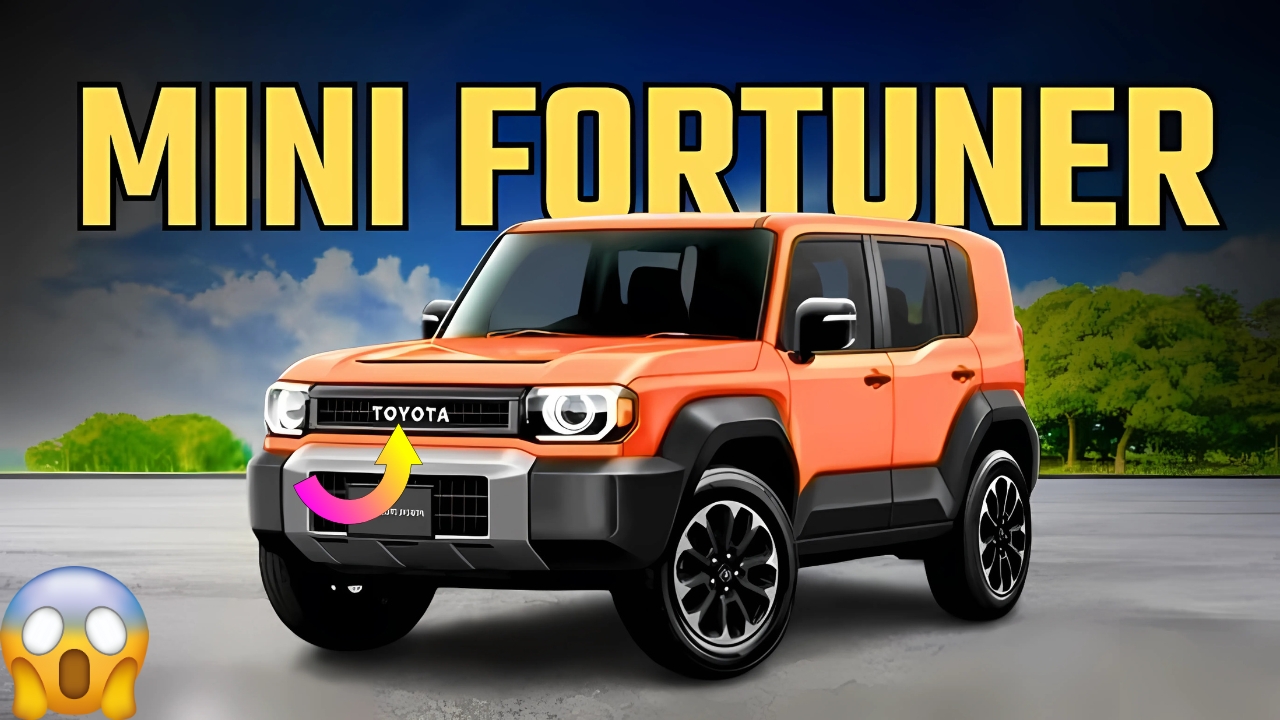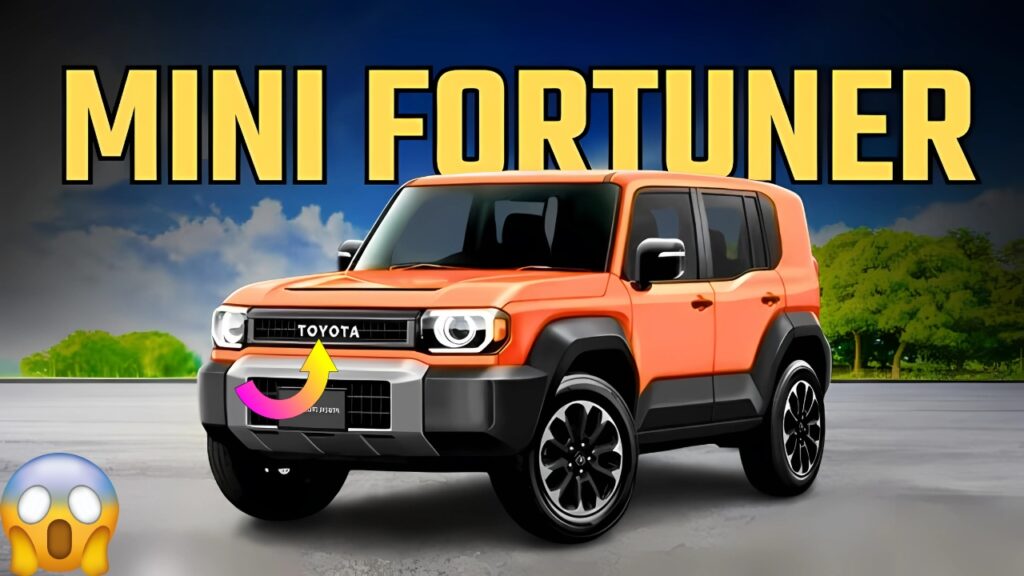Mini Fortuner : Toyota’s product planning division has reportedly greenlit development of a compact SUV internally dubbed the “Mini Fortuner,” targeting the burgeoning lifestyle off-road segment currently dominated by Mahindra’s Thar. Sources within the company suggest the vehicle will reach showrooms by late 2025, bringing Toyota’s legendary reliability to adventure-seeking buyers who find the full-size Fortuner beyond their budget. This calculated move reflects Toyota’s recognition of shifting consumer preferences toward capable yet affordable recreational vehicles.
Design Philosophy Blends Ruggedness with Refinement
The upcoming model draws inspiration from the Fortuner’s commanding presence while adapting proportions for urban maneuverability and trail accessibility. Early sketches indicate a upright stance with short overhangs that improve approach and departure angles for off-road adventures. The windshield maintains a relatively vertical position, maximizing interior space while creating the distinctive SUV profile buyers expect.
Body cladding protects vulnerable areas from trail damage without appearing excessive or purely decorative. The spare wheel mounting remains external, freeing cargo space while reinforcing the adventurous character. Ground clearance specifications suggest serious capability, positioned to handle rough terrain that would challenge conventional crossovers. Window glass area increases visibility for trail spotting, addressing a common complaint about modern SUVs with their rope-like rear windows.
Engineering Focus on Versatile Capability
Underneath the purposeful styling lies a chassis developed specifically for mixed-use scenarios ranging from daily commuting to weekend exploration. The suspension geometry balances on-road comfort with articulation needed for uneven terrain, avoiding the harsh ride that plagues many body-on-frame vehicles. Four-wheel drive systems include low-range gearing for technical situations, with electronic aids that help inexperienced drivers navigate challenging conditions safely.
Engine options reportedly include both petrol and diesel variants, acknowledging different customer priorities regarding performance and efficiency. Power delivery characteristics favor low-end torque for climbing obstacles and maintaining momentum in sand or mud. The transmission calibration considers both highway cruising and rock crawling requirements, with gear ratios that prevent constant shifting during varied terrain transitions.

Interior Accommodations Surprise with Practicality
Despite compact dimensions, the cabin packages cleverly to accommodate four adults comfortably, with occasional space for a fifth passenger. Seat materials resist moisture and dirt, acknowledging that adventure vehicles often transport wet or sandy occupants. Rubber floor mats replace carpeting in specific areas, enabling easy cleaning after muddy excursions.
Storage solutions appear throughout, including overhead compartments for smaller items and door pockets sized for water bottles and recovery gear. The dashboard design remains functional rather than flashy, with controls that operate easily while wearing gloves. Grab handles positioned strategically help passengers brace during rough terrain traversal, serving practical purposes beyond mere decoration.
Technology Integration Supports Adventure
Modern connectivity features ensure drivers remain connected even in remote locations, with antenna placement optimized for reception in valleys and forests. Navigation systems include topographic mapping capabilities, helping identify trails and camping locations beyond standard road networks. The infotainment interface simplifies operation through physical controls that work reliably despite dust or moisture exposure.
Camera systems aid in navigating tight trails, with views that help spot obstacles hidden below sight lines. Hill descent control maintains safe speeds on steep declines, reducing driver stress during challenging descents. Traction control calibrations include off-road modes that allow controlled wheel spin when needed for momentum through obstacles.
Safety Engineering Beyond Basic Requirements
Structural design prioritizes occupant protection during both on-road collisions and off-road rollovers. The roof structure exceeds standard requirements, supporting the vehicle’s weight during inversion scenarios. Airbag deployment strategies consider various impact angles, including the oblique hits common in off-road incidents.
Electronic stability systems include rollover mitigation programming that recognizes dangerous lean angles during aggressive maneuvers. Skid plates protect vital components from rock strikes, preventing strandings in remote locations. Recovery points integrate properly into the chassis structure, enabling safe extraction when adventures go slightly wrong.
Market Positioning Creates Interesting Dynamics
Toyota’s pricing strategy reportedly positions this compact SUV aggressively against established competitors, leveraging manufacturing efficiencies to deliver value. The brand’s reputation for reliability particularly resonates with adventure seekers who venture far from assistance. Service network coverage extends to remote areas where recreational vehicles commonly travel, providing confidence during extended trips.
Customization potential through genuine accessories allows buyers to personalize vehicles for specific activities, from camping to rock crawling. The aftermarket support that Toyota vehicles traditionally enjoy suggests extensive modification possibilities for enthusiasts. Resale values should remain strong given Toyota’s historical performance and the growing demand for capable compact SUVs.
Nokia Keypad Phone 5G finally launched with new premium design
Mini Fortuner Environmental Considerations Shape Development
Despite the recreational focus, environmental responsibility influences design decisions throughout development. Emission control systems meet stringent standards while maintaining performance at altitude where many adventures occur. Weight optimization reduces fuel consumption without sacrificing durability, acknowledging that efficiency matters even in recreational vehicles.
Manufacturing processes minimize waste while component recycling receives consideration from initial design stages. The company’s commitment extends beyond just vehicle operation, considering the full lifecycle impact from production through eventual disposal. These efforts appeal to environmentally conscious adventurers who want to explore nature responsibly.
